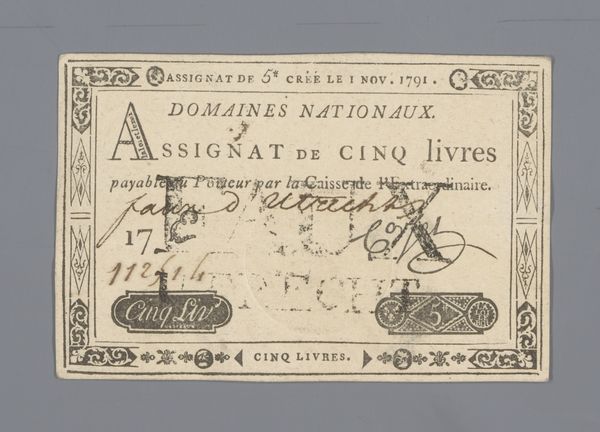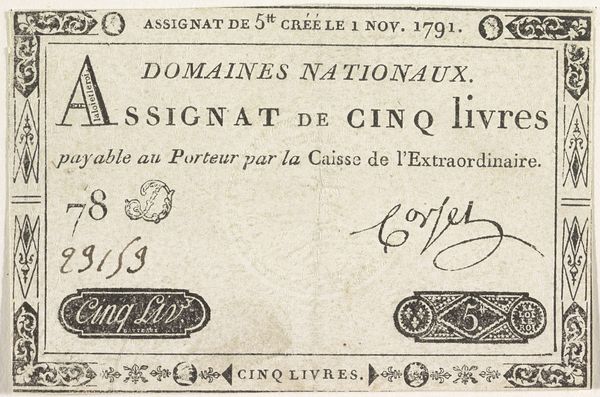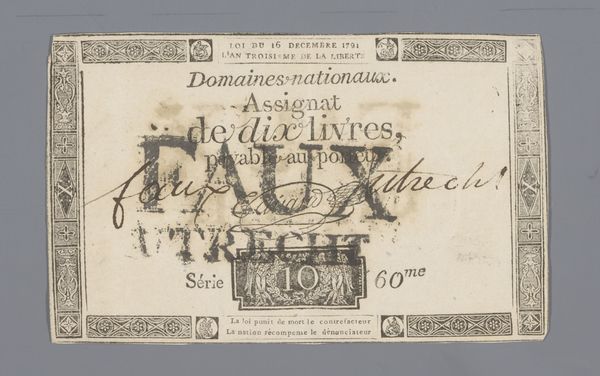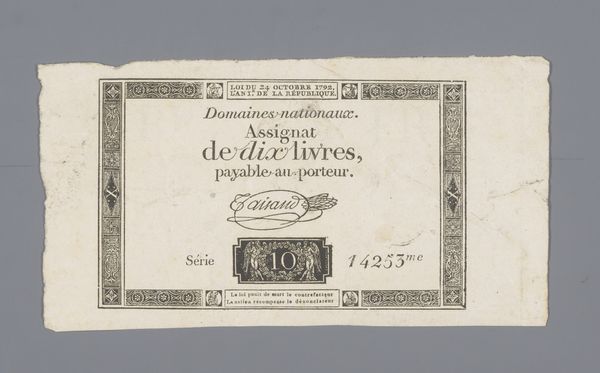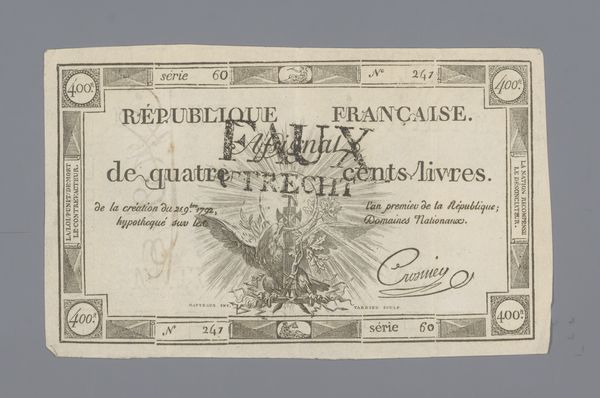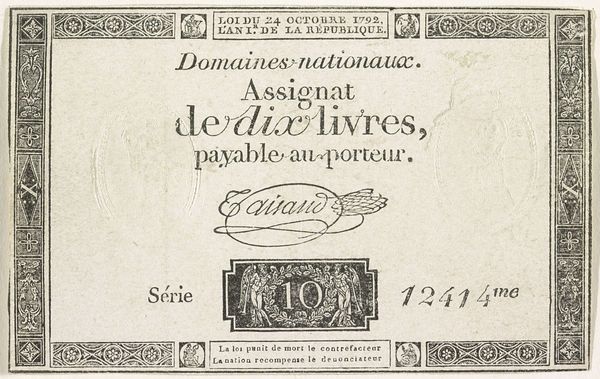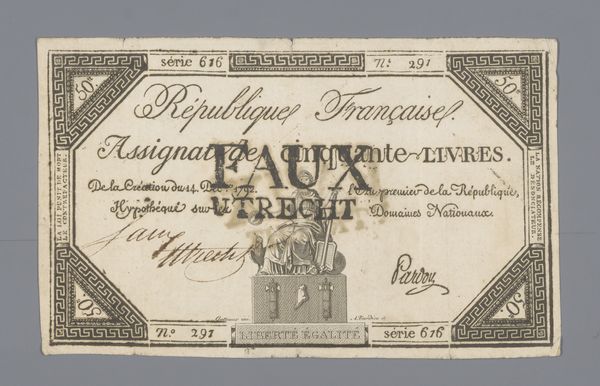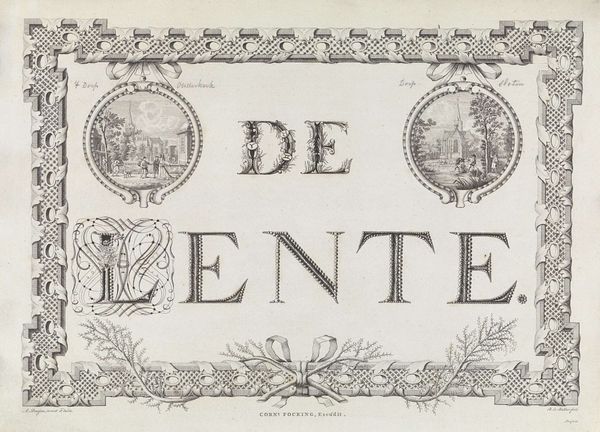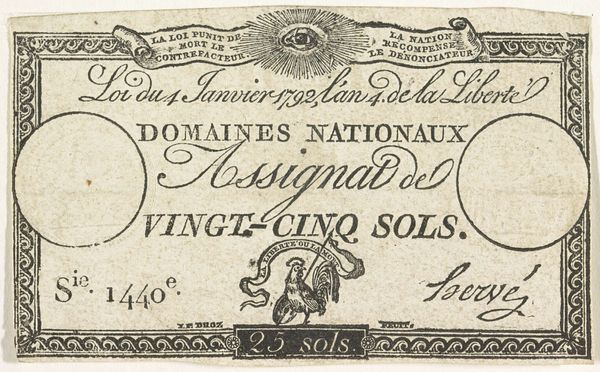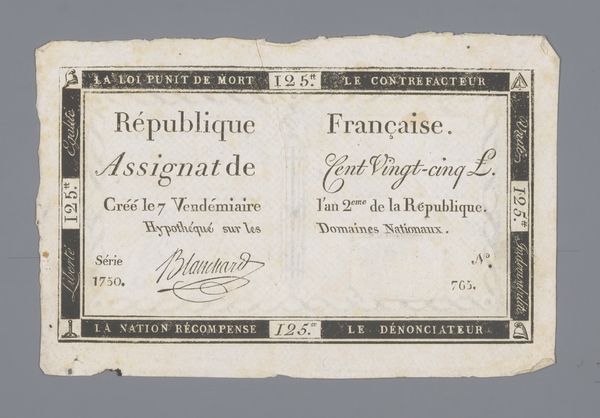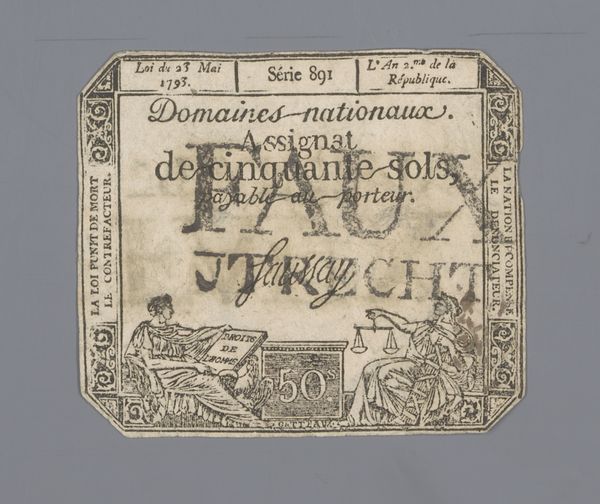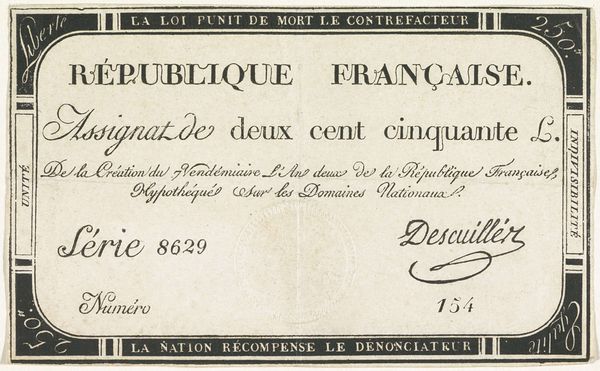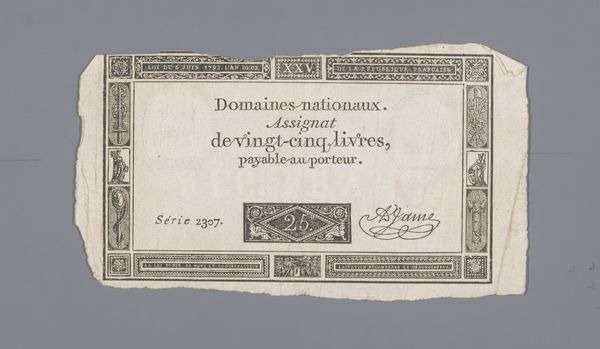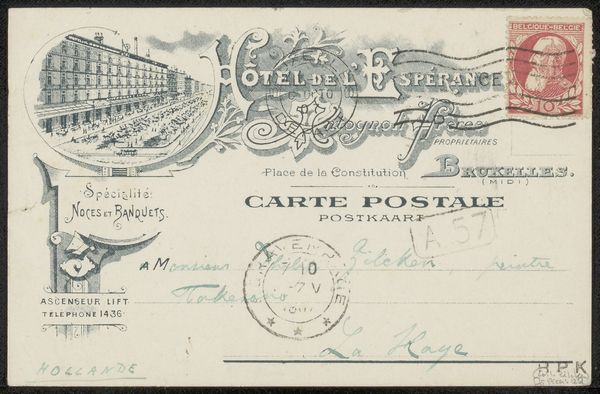
Assignat van vijf livres, serie 20 I no. 31985 uitgegeven 6 mei 1791 Possibly 1791 - 1796
0:00
0:00
graphic-art, print, typography, engraving
#
graphic-art
#
neoclacissism
# print
#
typography
#
engraving
Dimensions: length 6.8 cm, width 10.1 cm
Copyright: Rijks Museum: Open Domain
Curator: Welcome. Today, we're looking at an Assignat of Five Livres, series 20 I no. 31985 issued on May 6, 1791, though the production period extended for some time afterwards. This small printed note, likely an engraving, was created by Nicolas Marie Gatteaux. Editor: It strikes me as terribly fragile, even from a digital reproduction. You can almost feel the desperate hope pinned on such a small piece of paper amidst revolutionary upheaval. Curator: Indeed. Technically, its design adheres to neoclassical principles, note the symmetry, clean lines, and somewhat austere typography which communicate authority, while the engraving displays impressive detail for such a small object. Editor: But that very austerity feels loaded, doesn’t it? The promise of ‘Domaines Nationaux’—national lands— payable to the bearer masks the social and economic instability. The assignats were famously overprinted, fueling inflation and ultimately discrediting the revolutionary government. It reminds me of Foucault's discussion of power structures embedded within seemingly neutral forms. Curator: Interesting point. I see the neoclassical aesthetic as more than a mere facade. It’s an attempt to establish legitimacy through a visual language associated with order and reason, values the revolutionaries aimed to embody. The typography itself communicates the authority of the State. Editor: But at what cost? Widespread hunger and inequality continued as speculation ran rampant. The details within that decorative border don't resolve those contradictions. Curator: Agreed. Yet the abstract forms, divorced from narrative, aim to create a timeless statement of value. It’s a testament to the power of design to shape perception. Editor: Perhaps. Though I read that power as inextricably linked to the political and economic forces at play, a visual articulation of promises often broken, printed for mass circulation and rapidly losing worth. Curator: Thank you for illuminating its broader contexts. I've considered it solely from the position of a work intended to reflect clarity of form. Editor: A vital consideration, I wouldn’t deny. The print encapsulates the complex dynamics of a society undergoing radical change, its fragility belying the weighty historical forces it represents.
Comments
No comments
Be the first to comment and join the conversation on the ultimate creative platform.
